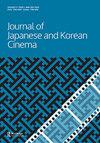A man to remember: two film adaptations of Kokoro
引用次数: 0
Abstract
ABSTRACT This paper investigates two film adaptations of Kokoro, one by Ichikawa Kon in 1955 and the other by Shindō Kaneto in 1973, to uncover transformations of male bonding in different contexts. Responding to the new libidinal economy of the Meiji era, Sōseki’s novel envisions the heteronormative future while corporeal desire between men is relegated to the past. The Meiji reconfiguration of sexuality and male bonding is transcoded to the 1950s post-war period in Ichikawa’s version and the post-protest 1970s in Shindō’s adaptation. The 1955 Kokoro emasculates the male characters as passive subjects who can only obediently follow shifting conventions of masculinity. Ichikawa’s contribution is to expose how social pressure is enforced upon people whose desire to deviate from the norms needs to be kept in secrecy. On the other hand, the 1973 Kokoro contributes to the homosocial imagination of political activism as a lamentable loss through which firm bonding between men is formed whereas the marital union is denied. In the analyses of the film adaptations of Kokoro, a transformative quality of male bonding inevitably exposes what the patriarchal system latches onto shifts as the times change.一个值得记住的人:两部科科罗改编的电影
摘要:本文考察了1955年市川今和1973年金户信的两部改编自《Kokoro》的电影,以揭示不同语境下男性关系的转变。Sōseki的小说回应了明治时代的新性欲经济,设想了异性恋规范的未来,而男人之间的物质欲望则被归入过去。在市川的版本中,明治对性和男性关系的重新配置被转码到战后的20世纪50年代,而在新藤的改编中,则转码到抗议后的70年代。1955年的《科科罗》(Kokoro)将男性角色阉割为被动的主体,他们只能顺从地遵循不断变化的男性气质惯例。市川的贡献在于揭示了社会压力是如何施加在那些渴望偏离规范的人身上的,这些人需要保密。另一方面,1973年的Kokoro为同性恋社会对政治激进主义的想象做出了贡献,认为这是一种可悲的损失,通过这种损失,男性之间建立了牢固的联系,而婚姻联盟却被否定了。在对《科科罗》改编电影的分析中,男性关系的变革性不可避免地暴露了父权制度所依赖的东西随着时代的变化而变化。
本文章由计算机程序翻译,如有差异,请以英文原文为准。
求助全文
约1分钟内获得全文
求助全文
来源期刊

Journal of Japanese and Korean Cinema
Arts and Humanities-Visual Arts and Performing Arts
CiteScore
0.60
自引率
0.00%
发文量
16
期刊介绍:
Journal of Japanese and Korean Cinema is a fully refereed forum for the dissemination of scholarly work devoted to the cinemas of Japan and Korea and the interactions and relations between them. The increasingly transnational status of Japanese and Korean cinema underlines the need to deepen our understanding of this ever more globalized film-making region. Journal of Japanese and Korean Cinema is a peer-reviewed journal. The peer review process is double blind. Detailed Instructions for Authors can be found here.
 求助内容:
求助内容: 应助结果提醒方式:
应助结果提醒方式:


